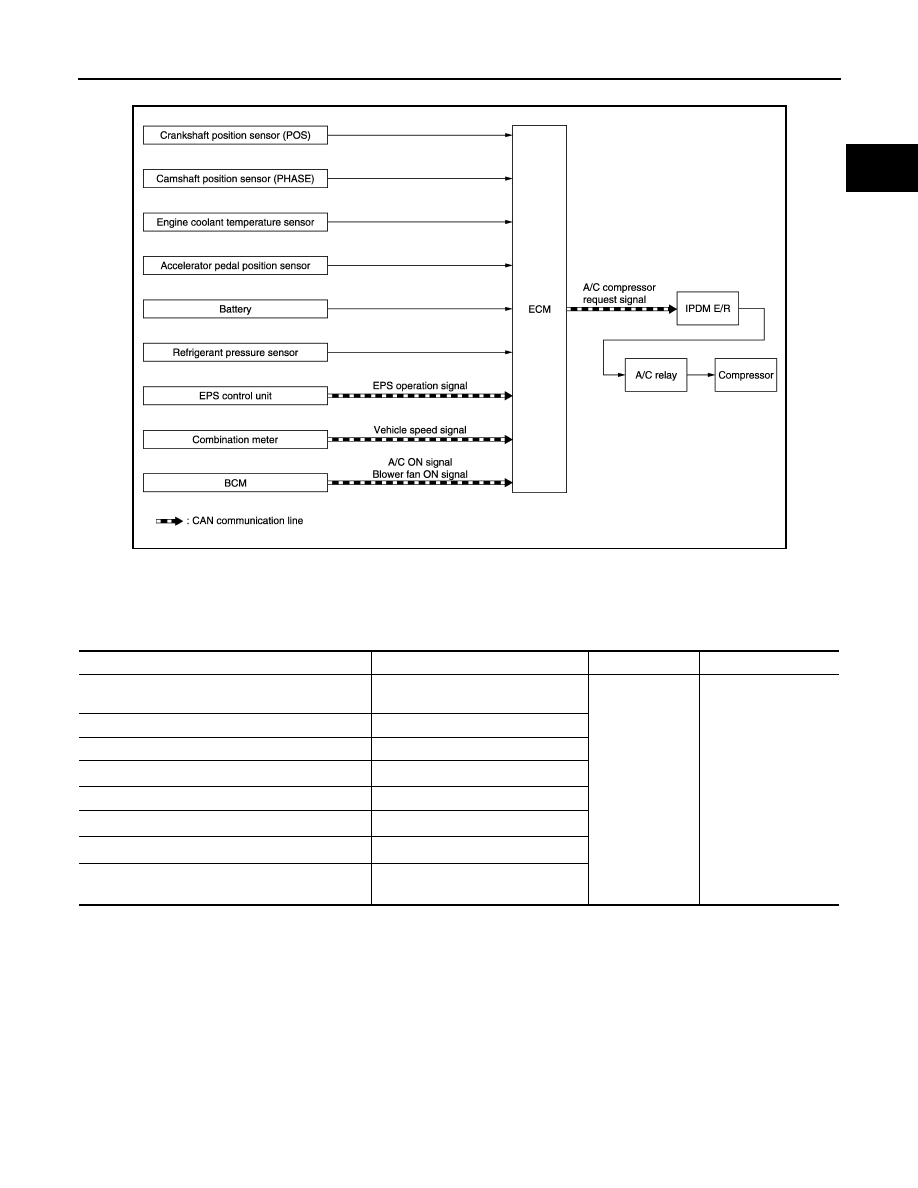Nissan March K13. Manual - part 144

SYSTEM
EC-37
< SYSTEM DESCRIPTION >
[HR12DE (TYPE 1)]
C
D
E
F
G
H
I
J
K
L
M
A
EC
N
P
O
AIR CONDITIONING CUT CONTROL : System Diagram
INFOID:0000000005995404
AIR CONDITIONING CUT CONTROL : System Description
INFOID:0000000005995405
INPUT/OUTPUT SIGNAL CHART
*1: ECM determines the start signal status by the signals of engine speed and battery voltage.
*2: This signal is sent to the ECM through CAN communication line.
SYSTEM DESCRIPTION
This system improves engine operation when the air conditioner is used.
Under the following conditions, the air conditioner is turned off.
• When the accelerator pedal is fully depressed.
• When cranking the engine.
• At high engine speeds.
• When the engine coolant temperature becomes excessively high.
• When operating power steering during low engine speed or low vehicle speed.
• When engine speed is excessively low.
• When refrigerant pressure is excessively low or high.
JSBIA0320GB
Sensor
Input signal to ECM
ECM function
Actuator
Crankshaft position sensor (POS)
Camshaft position sensor (PHASE)
Engine speed
*1
A/C compressor
repuest signal
IPDM E/R
↓
Air conditioner relay
↓
Compressor
Engine coolant temperature sensor
Engine coolant temperature
Accelerator pedal position sensor
Accelerator pedal position
Battery
Battery voltage
*1
Refrigerant pressure sensor
Refrigerant pressure
EPS control unit
EPS operation signal
*2
Combination meter
Vehicle speed signal
*2
BCM
A/C ON signal
*2
Blower fan ON signal